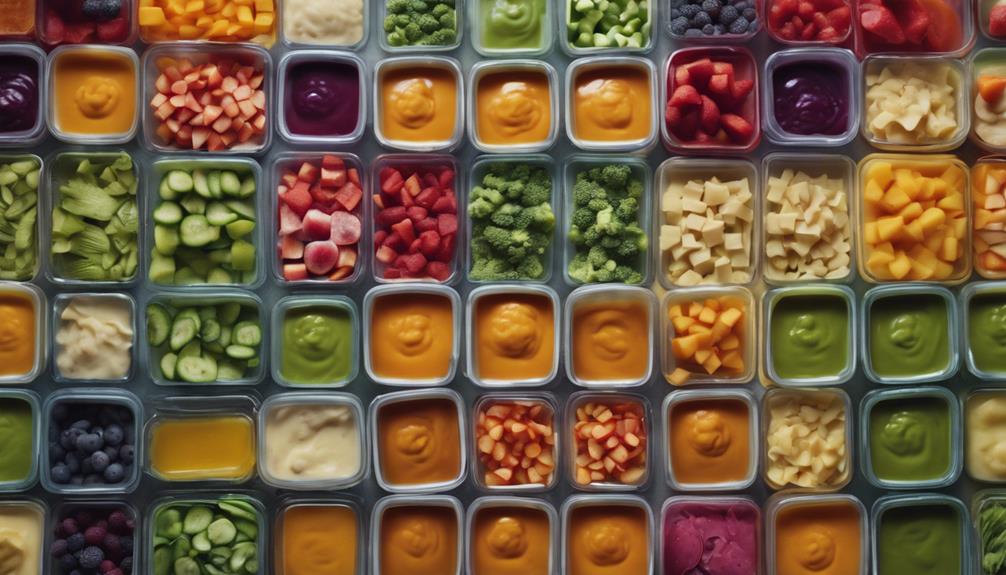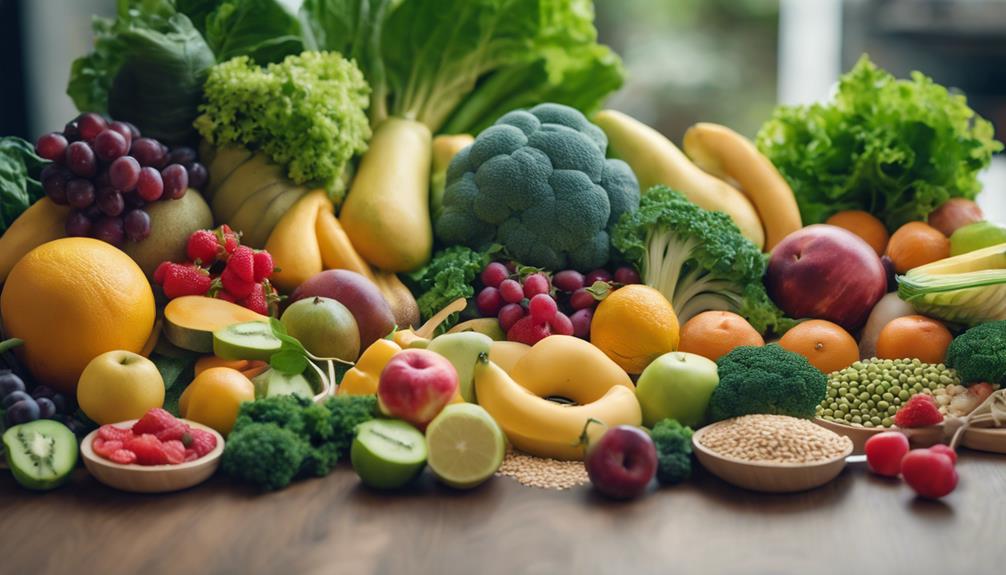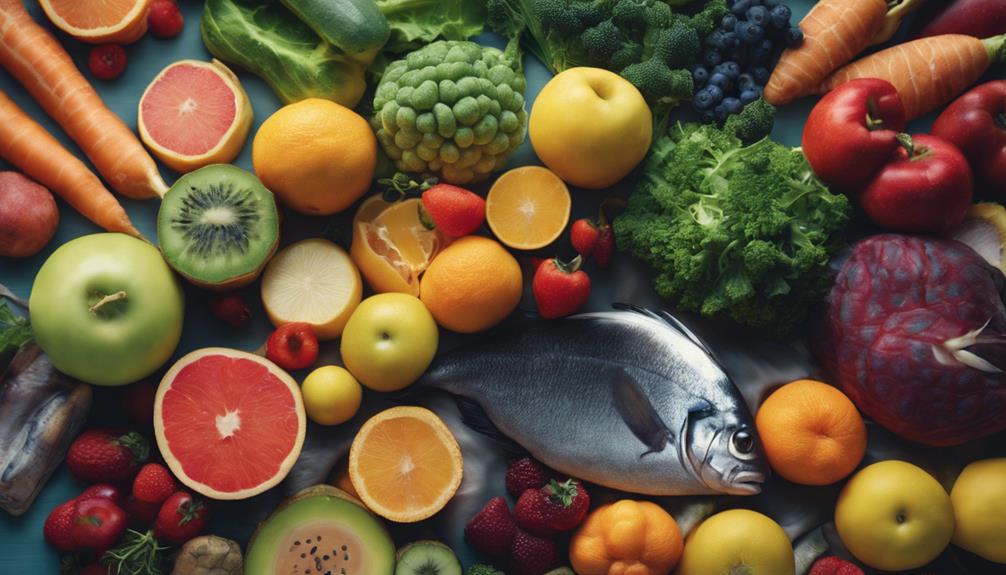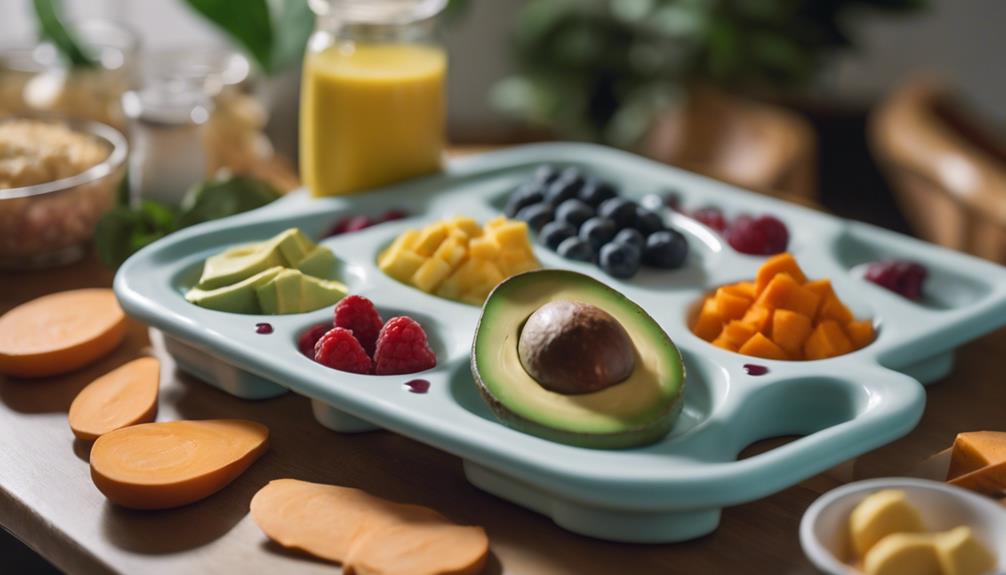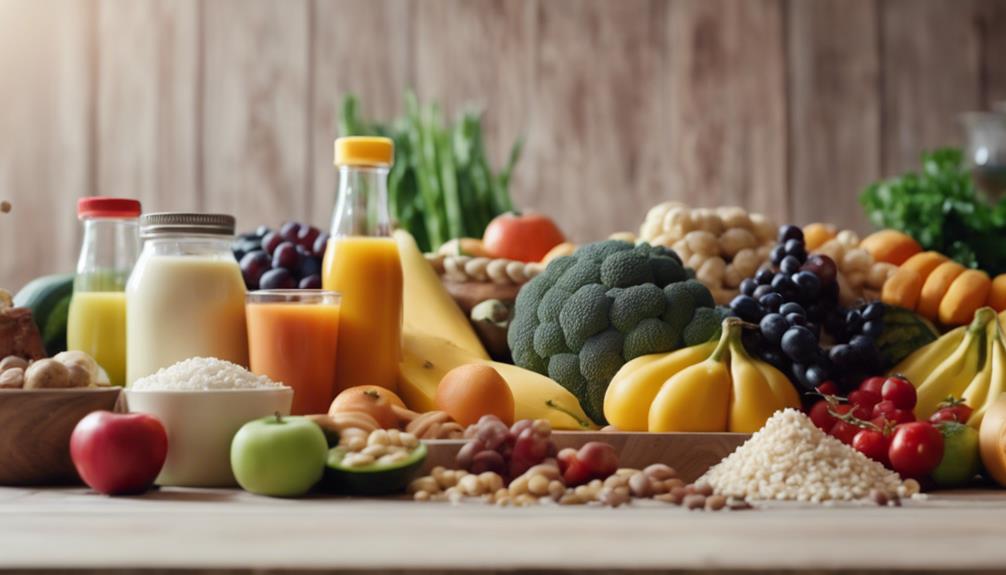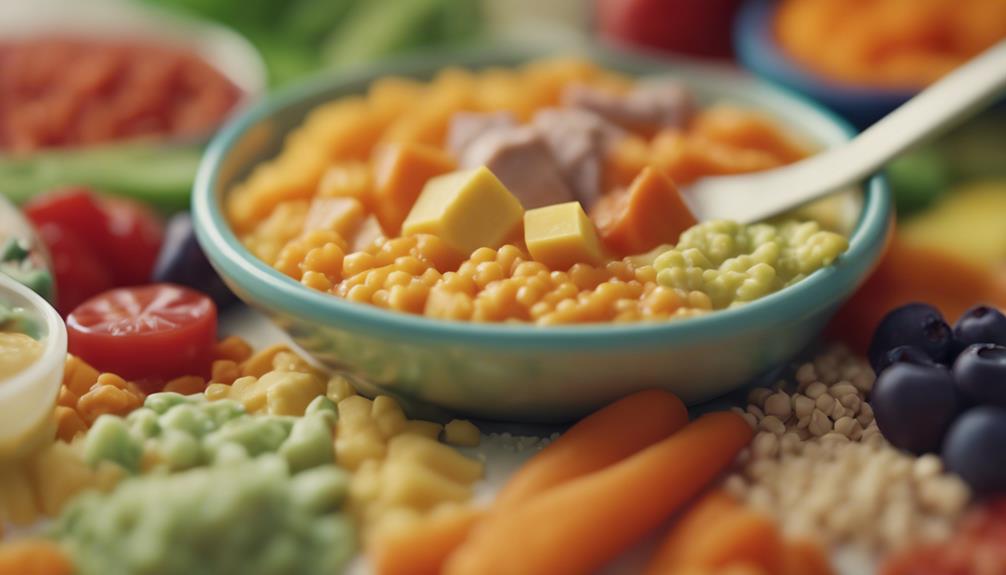Discover a plethora of tasty and nutritious baby food recipes designed to please your little one’s palate while also providing essential nutrients for their healthy growth. From nutrient-rich options like egg yolk to sweet potatoes packed with vitamins, these recipes are crafted with your baby’s well-being in mind. Give the Green Bean Baby puree a try for added fiber and vitamins, or delve into Quinoa Baby for a complete protein source. Get creative with different ingredients to offer a varied and wholesome diet that your baby will love. Explore a wide range of delicious recipes that perfectly combine flavor and nutrition.
Key Takeaways
- Include nutrient-dense ingredients like fruits, vegetables, and meats for balanced nutrition.
- Experiment with diverse flavors and textures to develop baby's palate.
- Incorporate healthy fats like avocado for essential brain development.
- Use organic ingredients to minimize exposure to pesticides and chemicals.
- Prioritize iron-rich foods like egg yolk and liver to prevent anemia.
Baby Food Introduction
When introducing solid foods to your baby around 6 months old, focus on iron-rich options like egg yolk and liver to support their development.
Starting solids at this age is important for preventing iron deficiency anemia in babies. Signs that your baby is ready for solid foods include reaching for food and showing interest in what others are eating.
Homemade baby food is a great way to make sure your little one gets the nutrients they need. Begin with soft or pureed foods to help your baby shift to solid foods more easily.
Iron-rich foods like egg yolk and liver are recommended as first solid foods for babies due to their high nutritional value.
Solid Food Readiness
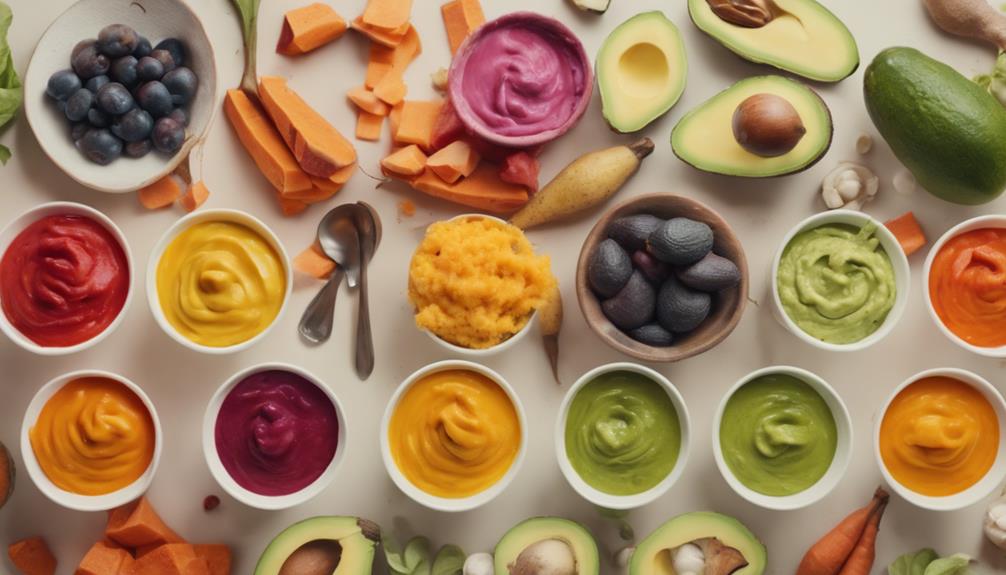
To determine if your baby is ready for solid foods, observe for signs such as sitting up without support and showing interest in food. Additionally, watch for the loss of the tongue-thrust reflex and the ability to pick up objects, as these are further indications of readiness for solid foods.
The American Academy of Pediatrics recommends starting solid foods around 6 months of age to ensure that your baby receives the necessary nutrients for growth and development. At around 6 months old, babies require additional iron, which can be obtained from iron-rich solid foods. It's crucial to introduce solid foods at the right time to prevent choking and digestive issues in infants.
- Signs of Readiness: Sitting up without support
- Interest in Food: Showing curiosity towards what you're eating
- Loss of Tongue-Thrust Reflex: Tongue no longer pushes food out of the mouth automatically
- Ability to Pick Up Objects: Developing fine motor skills needed for self-feeding
- Iron-Rich Foods: Essential for baby's growth and brain development
Introducing Foods to Babies

When guiding your baby's shift to solid foods, remember that introducing new foods is a gradual process that requires careful attention to your baby's readiness and potential allergic reactions. Signs like sitting ability, interest in food, and the loss of the tongue-thrust reflex indicate your baby may be ready for first foods.
Before starting, always consult your pediatrician to make sure your baby is developmentally ready. When introducing foods to babies, opt for small portions of 1-2 tablespoons to gauge their reaction. Start with simple baby food combinations like pureed fruits or vegetables. Remember to introduce common allergens cautiously, monitoring for any adverse reactions.
Fun food exploration can help your baby develop a positive relationship with food and encourage healthy eating habits. By taking it slow and being mindful of your baby's cues, you can make the shift to solid foods a smooth and enjoyable experience for both you and your little one.
Best Baby Food Choices
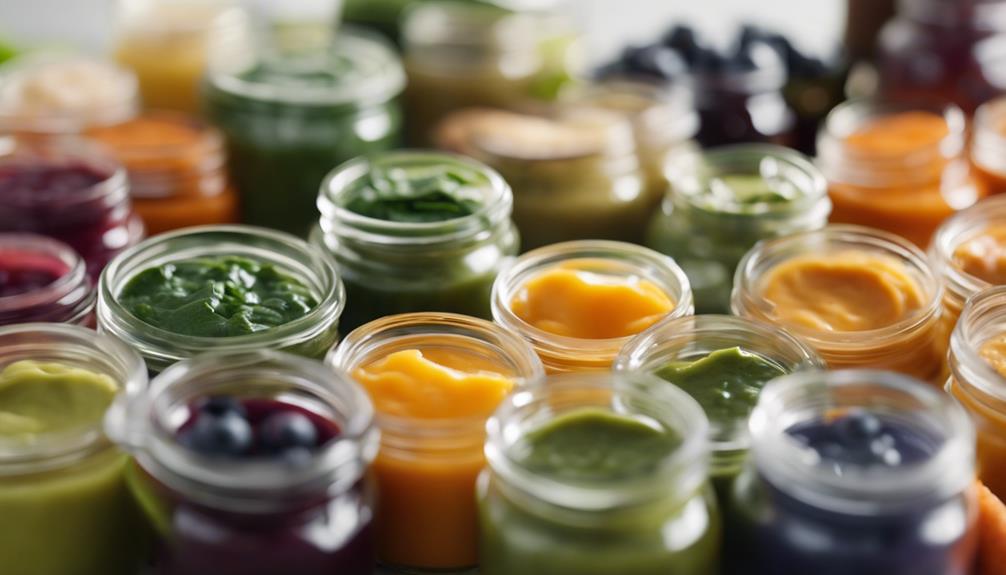
For ideal baby nutrition, prioritize nutrient-dense foods like fruits, vegetables, meats, and healthy fats when selecting the best baby food choices.
When choosing the best first foods for your baby, consider options like:
- Sweet Potatoes: Rich in vitamins and fiber, sweet potatoes make a delicious and nutritious choice for your little one.
- Homemade Baby Food: Opting for homemade baby food allows you to control ingredients, ensuring a higher quality and more nutritious meal for your baby.
- Best First Foods: Introduce nutrient-dense foods early on to establish healthy eating habits from the start.
- Essential Options: Fruits, vegetables, meats, and healthy fats provide essential nutrients vital for your baby's growth and development.
- Diverse Diet: Offering a variety of homemade baby food options helps expose your baby to different flavors and nutrients, promoting a well-rounded diet.
Homemade Baby Food Basics
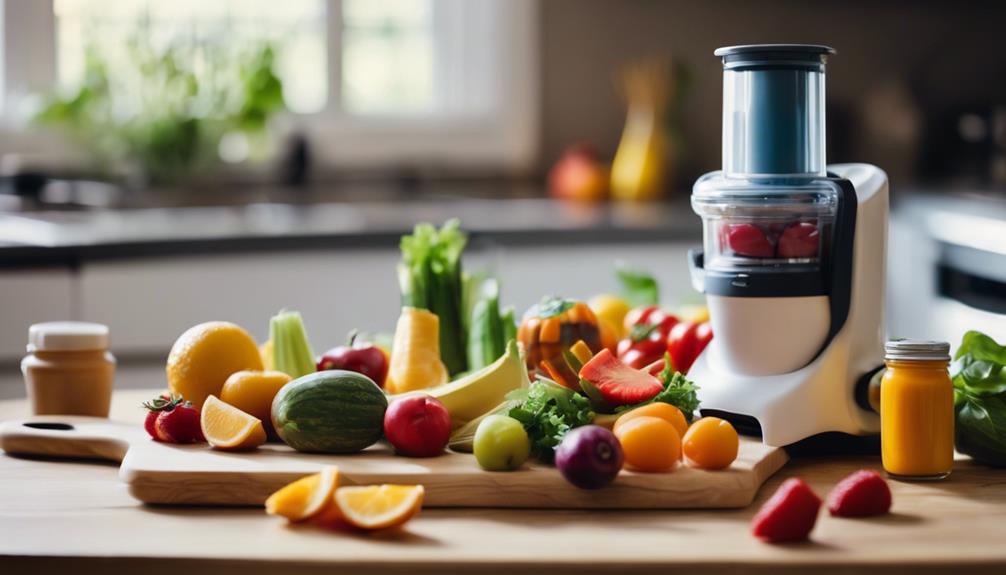
When it comes to homemade baby food basics, understanding ingredient selection tips, storage, and safety is crucial.
By carefully choosing ingredients, you can guarantee your baby receives top-notch nutrition.
Proper storage and safety measures will help you maintain the quality of the food for your little one.
Ingredient Selection Tips
Prioritizing nutrient-dense ingredients such as sweet potatoes, peas, and fruits rich in vitamins and minerals is crucial when preparing homemade baby food.
When selecting ingredients, keep the following tips in mind:
- Opt for organic produce to reduce pesticide exposure and provide wholesome, chemical-free ingredients for your baby's meals.
- Choose a variety of ingredients to introduce different flavors and textures to your baby's palate, promoting a well-rounded diet early on.
- Consider adding healthy fats like avocado or coconut oil to boost the nutritional value of homemade baby food recipes.
- Confirm that the ingredients you use are age-appropriate and free from potential allergens to support your baby's healthy development.
Storage and Safety
Consider the storage and safety guidelines for homemade baby food to guarantee freshness and nutritional quality for your little one. After preparing homemade baby food, store it in sealed containers in the refrigerator for 3-4 days to maintain its freshness.
For longer storage, freeze the baby food in ice cube trays for up to 3-4 months. When ready to serve, thaw the frozen baby food in the refrigerator or under warm water to assure safety.
To create the ideal texture for homemade baby food, blend at least 1 cup of base ingredients together. If the consistency is too thick for your baby's liking, thin out the baby food with breast milk, bone broth, or cooking liquid until you achieve the desired texture.
Baby Food Storage Tips
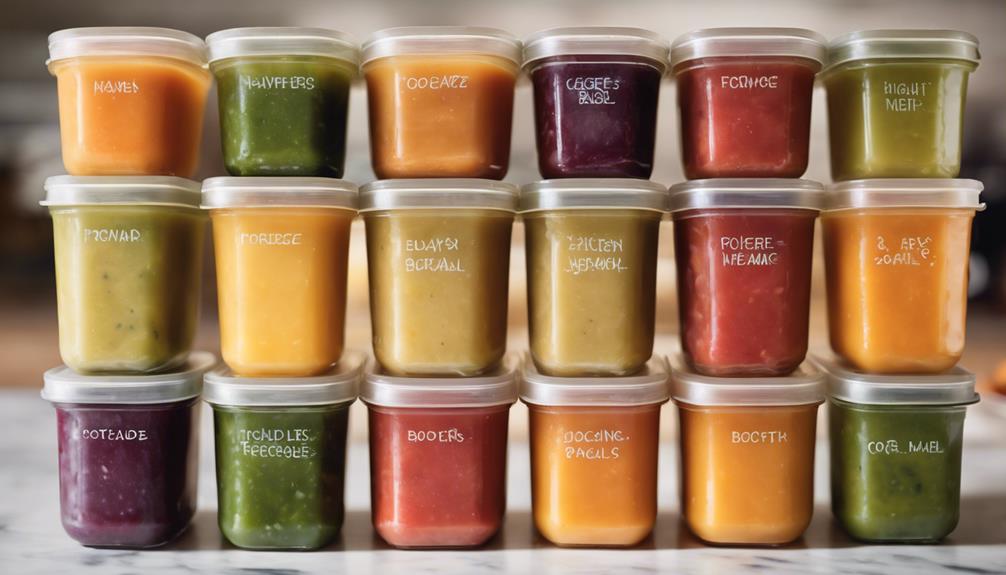
When storing homemade baby food, make sure to use proper containers to keep it fresh and safe for your little one. Remember to refrigerate the purees in sealed containers for up to 3-4 days, or freeze them for longer storage periods of 3-4 months.
Following these guidelines will help preserve the nutrients and flavors of the baby food, ensuring your baby gets the best possible meals.
Proper Storage Containers
For best freshness and safety of homemade baby food, store it in airtight containers made of BPA-free plastic or glass jars. These containers help maintain the quality of the food and prevent any harmful substances from seeping into the meal.
Here are some tips for proper storage of baby food:
- Use Airtight Containers: Opt for containers that seal tightly to keep air out and preserve the food longer.
- Select BPA-Free Containers: Guarantee the containers are free from BPA, a chemical that can be harmful, especially for babies.
- Label with Dates: Don't forget to label the containers with the date of preparation to keep track of freshness and expiration.
- Portion Control: Freeze baby food in small portions using ice cube trays for easy serving sizes.
- Thawing Techniques: To thaw frozen baby food, either place it in the refrigerator overnight or use warm water to preserve its nutrients and texture.
Refrigeration Guidelines
Proper refrigeration is essential for maintaining the freshness and quality of homemade baby food. Once you have prepared your nutritious baby meals, it's vital to store them in the refrigerator promptly. Homemade baby food can be refrigerated in a sealed container for up to 3 days to guarantee it stays fresh and safe for your little one. Remember to label the containers with the date of preparation for easy tracking.
Storing homemade baby food in the refrigerator allows for quick and convenient feeding times. When ready to serve, simply take out the desired portion and warm it up before feeding your baby.
If you find yourself needing to extend the storage duration, consider freezing the homemade baby food in ice cube trays. This method can preserve the food for up to 3 months, providing you with a stash of convenient portions for later use.
Freezing Homemade Baby Food
To guarantee the best storage of your homemade baby food, consider freezing individual portions in freezer trays or small containers for convenient use later on. Freezing homemade baby food is a great way to preserve nutrients and flavors while ensuring that your baby always has a fresh and healthy meal available.
Here are some tips for freezing homemade baby food:
- Use freezer trays or small containers to portion out the baby food before freezing.
- Label each container with the date of preparation to keep track of freshness.
- Thaw frozen baby food in the refrigerator or under warm water to maintain its quality.
- Homemade baby food can be stored in the freezer for up to 4 months, ensuring a long shelf life.
- Properly stored frozen baby food can retain its nutrients and flavors for several months, making it a convenient option for busy parents.
Additional Recipe Ideas
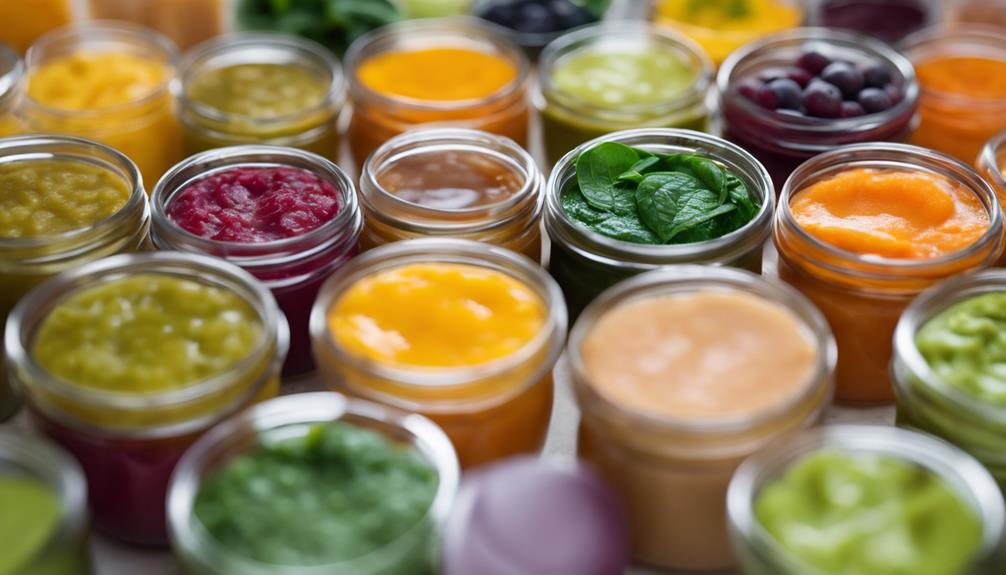
Consider exploring these additional baby food recipe ideas to further diversify your little one's palate and nutritional intake. For a nutritious twist, try the Green Bean Baby puree, packed with vitamins and fiber to support your baby's growth.
Quinoa Baby is another excellent choice, offering a complete protein source and essential nutrients for your little one.
Sweet Potato Baby is a classic favorite, rich in beta-carotene and a sweet taste that babies love. These recipes not only introduce new flavors but also provide a range of essential nutrients crucial for your baby's development. Experimenting with different ingredients can help establish a diverse and healthy diet early on.
Introducing these additional recipe ideas can broaden your baby's culinary experiences and ensure they receive a variety of nutrients necessary for their well-being. By incorporating Green Bean Baby, Quinoa Baby, and Sweet Potato Baby into your baby's meal rotation, you can create a well-rounded diet that supports their growth and development.
Frequently Asked Questions
What Is the Healthiest Way to Make Baby Food?
When making baby food, focus on using fresh, whole ingredients to pack in nutrients. Avoid sugar, salt, and additives for purity. Steam, roast, or boil fruits and veggies to retain their flavors. Homemade allows control and customization for your baby's needs.
What Is the #1 Most Important Food for Your Baby?
For your baby, the number one most important food is breast milk. It provides essential nutrients, antibodies, and tailored nutrition for best growth and development. Breastfeeding for the first six months is recommended by health experts.
What Are the Best Nutrient Rich Foods for Babies?
When choosing nutrient-rich foods for your baby, focus on quinoa for complete protein, avocado for healthy fats, sweet potatoes for vitamins, blueberries for antioxidants, and spinach for iron. These options support growth and development.
How to Make Good Tasting Baby Food?
To make good tasting baby food, enhance flavors with natural spices like cinnamon and basil. Use cooking techniques such as steaming or roasting for best taste. Introduce new flavors like mint to expand your baby's palate.
Conclusion
To sum up, these delicious and nutritious baby food recipes will have your little one begging for more!
With simple ingredients and easy-to-follow steps, you can create meals that aren't only healthy but also tasty.
So, get ready to impress your baby's taste buds and nourish their growing bodies with these homemade delights.
Your baby will thank you for it!

